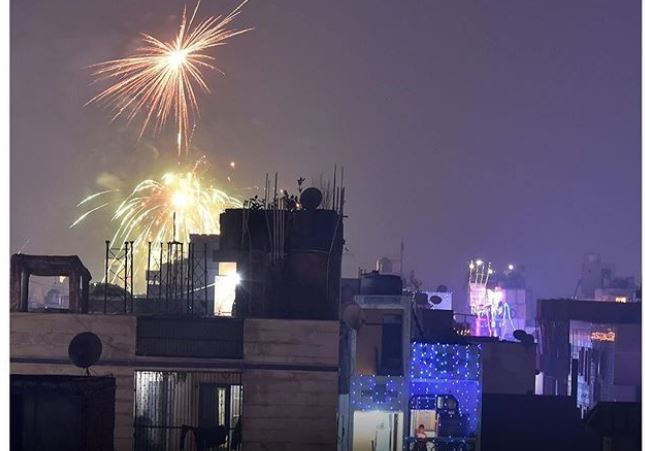New Delhi: The morning after Diwali celebration, a thick blanket of noxious smog enveloped the national capital and shot up the pollution in the city to “emergency” level Sunday where the hourly average concentrations of PM 2.5, a deadly pollutant, touched more than 1000ug/m3 at midnight, the Ministry of Earth Sciences officials said.
The satellite towns also showed emergency and severe level readings of AQI. The situation has followed after the non-compliance of people from bursting crackers.
As per System of Air Quality and Weather Forecasting And Research (SAFAR), the effective Stubble fire counts (with sufficient potential) estimated reduced significantly to around 350 on Saturday in contrast to around 2,586, a day before Diwali.
“In view of this, stubble burning share in PM2.5 in Delhi’s air is almost negligible and estimated as around 4 per cent for today,” the officials shared.
As per SAFAR, the overall AQI of Delhi remained 525 while in Noida, it crossed 600 with PM10 being the lead pollutant. The Central Pollution Control Board (CPCB) measured AQI in Ghaziabad at 473, in Greater Noida at 432, and Gurugram at 425.
In Delhi, the air quality has maintained emergency level deterioration for the last five days. However, the ministry officials noted three very positive developments which were expected to bring a quick recovery from the current pollution scenario.
“(1) The boundary layer winds have picked up and changed its direction to easterly now which is not favorable for stubble fire-related intrusion. (2) The better ventilation condition is likely to prevail now for faster dispersion; and (3) An isolated scattered rainfall under the influence of fresh Western Disturbance by today evening is also expected,” the officials reasoned.
The officials also forecast that the AQI is likely to start improving from the afternoon and settle in the lower end of very poor category on Monday. They also said that the AQI may touch the poor category in case of enough rains and washout.
Before Diwali, the Ministry of Earth Sciences had claimed that the level of PM2.5, is likely to be lowest in the past four years under zero-firecracker scenarios during Diwali.
On November 9, the National Green Tribunal had imposed a blanket ban on sale or use of all kinds of firecrackers in the National Capital Region till November 30. The direction was also applied to cities and towns where air quality during November fell to ‘poor’ and above categories.
In 2019, however, even though the Delhi Government had organized four days of laser shows to convince the residents to choose life over firecrackers, the morning after Diwali, city’s air quality had turned worse than 2018.
With the spike in air pollution in Delhi-NCR, the Central Pollution Control Board (CPCB) had ordered closing of hot mix plants and stone crushers till November 17 and also asked Punjab and Haryana to take stringent actions to curb stubble burning.
The AQI is forecasted to stay in the middle-end of the Very Poor category Monday and Tuesday. However, only drizzling may trigger secondary particulate formation to only slightly improve the current level to balance the recovery, but it has very less probability.
